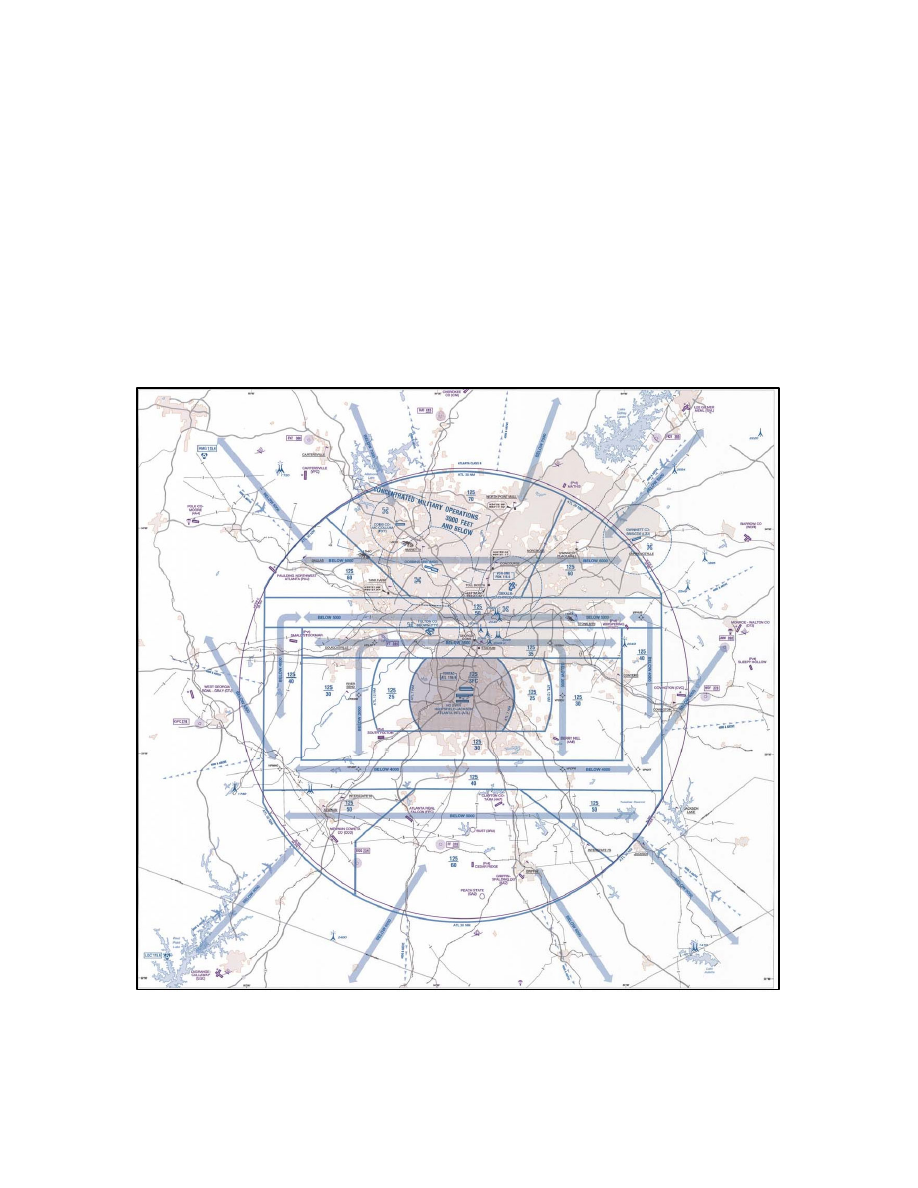
AIM
9/5/24
3
−
5
−
5. Published VFR Routes
Published VFR routes for transitioning around, under and through complex airspace such as Class B airspace
were developed through a number of FAA and industry initiatives. All of the following terms, i.e., “VFR Flyway”
“VFR Corridor” and “Class B Airspace VFR Transition Route” have been used when referring to the same or
different types of routes or airspace. The following paragraphs identify and clarify the functionality of each type
of route, and specify where and when an ATC clearance is required.
a. VFR Flyways.
1.
VFR Flyways and their associated Flyway Planning Charts were developed from the recommendations
of a National Airspace Review Task Group. A VFR Flyway is defined as a general flight path not defined as a
specific course, for use by pilots in planning flights into, out of, through or near complex terminal airspace to
avoid Class B airspace. An ATC clearance is NOT required to fly these routes.
FIG 3
−
5
−
1
VFR Flyway Planning Chart
2.
VFR Flyways are depicted on the reverse side of some of the VFR Terminal Area Charts (TAC),
commonly referred to as Class B airspace charts. (See FIG 3
1.) Eventually all TACs will include a VFR
Flyway Planning Chart. These charts identify VFR flyways designed to help VFR pilots avoid major controlled
traffic flows. They may further depict multiple VFR routings throughout the area which may be used as an
3
−
5
−
6
Other Airspace Areas